By Ruth Bayang
NORTHWEST ASIAN WEEKLY

The group visited Union Station, entry for 4th Ave. option. (Photo by Assunta Ng)
After a walking tour on June 22 to see firsthand how a Sound Transit (ST) project will impact the Chinatown-International District (CID), and businesses and residents, King County Councilmember and ST System Expansion Committee member Joe McDermott said, “More study and most importantly, conversation with community—not presentations to, but genuine dialogue with—is imperative.”
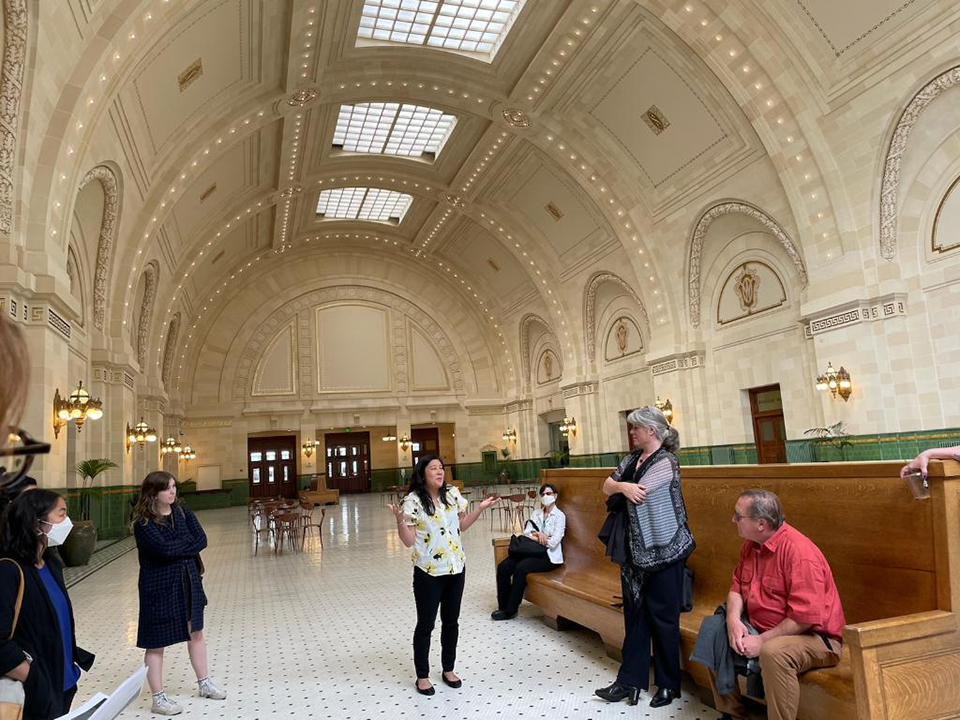
Inside Union Station (Photo by Assunta Ng)
“The walking tour… with Moriguchi family members and other representatives of the local grocery retailer Uwajimaya was very educational and impactful,” said Claudia Balducci, King County Council Chair and fellow ST System Expansion Committee member.
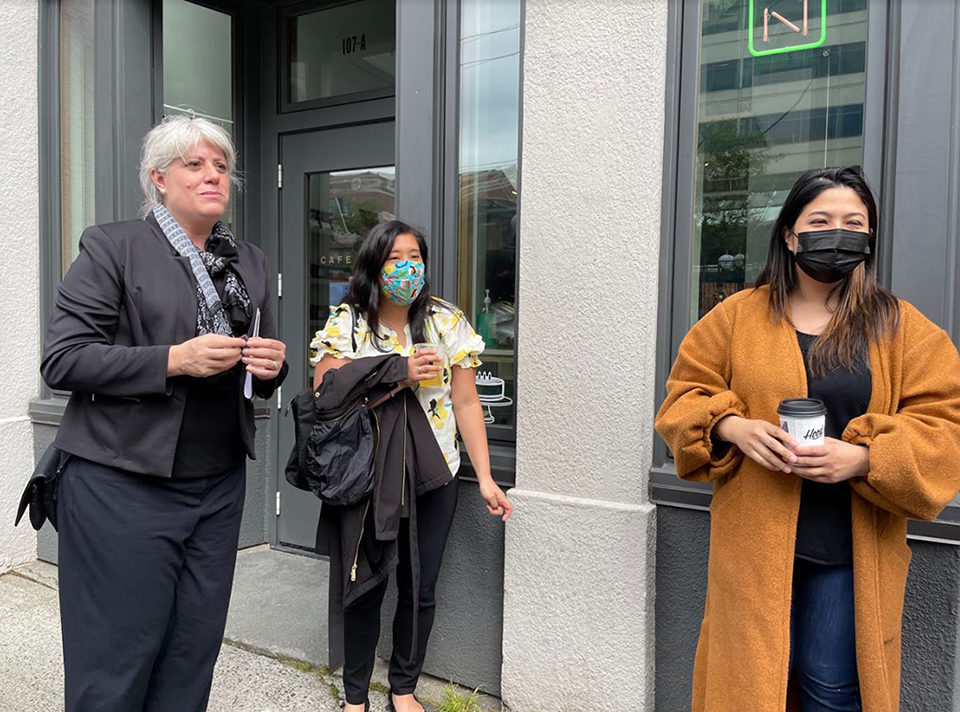
King County Council‘s Claudia Balducci and Uwajimaya’s Denise Moriguchi visited Hood Famous Cafe+Bar with owner Amlag Quibuyen (Photo by Assunta Ng)
“The CID is in the middle of what is arguably ST’s most complex light rail expansion in its almost 30-year history—the 12-mile line that will connect the West Seattle and Ballard neighborhoods,” said Balducci. “The decisions ST makes today will have implications for generations.”
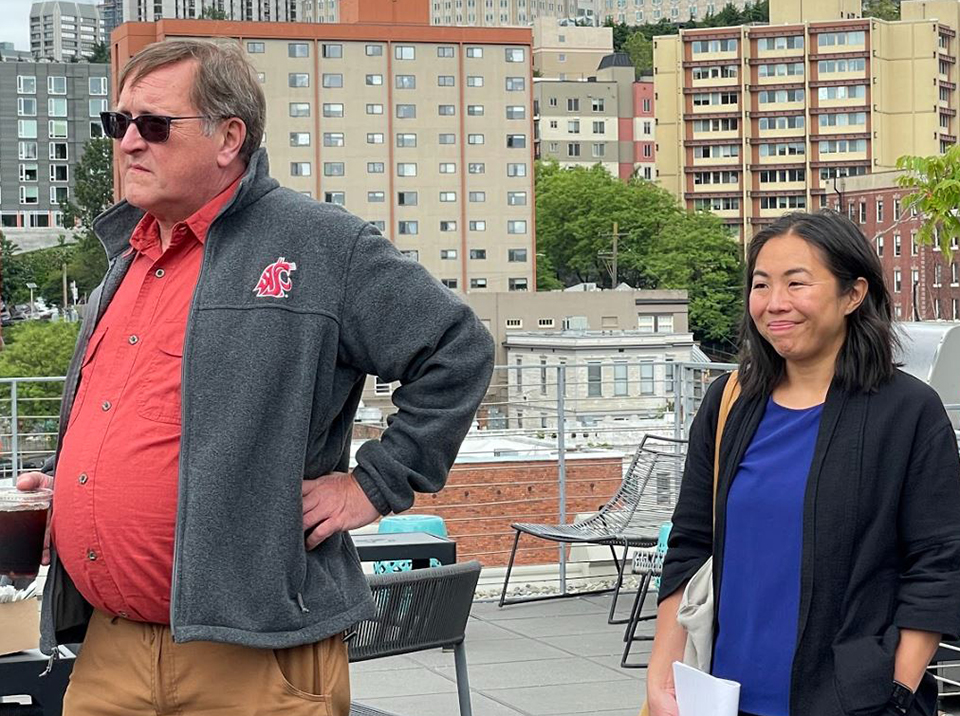
Uwajimaya Real Estate Manager Miye Moriguchi talks about the CID and her family business history. (Photo by Assunta Ng)
“Hearing from the community is essential for good decisions for ST and the region’s long-range high capacity transit, but more importantly for the CID. We must be mindful of the context in the neighborhood—the exclusions and discrimination that created it in the first place, and impacts over time including but not limited to internment, the construction of I-5, the Kingdome, and the baseball and football stadiums,” said McDermott.
Leading part of the tour, Uwajimaya’s Real Estate & Facilities Manager Miye Moriguchi, explained that there is a large population of seniors in the CID.
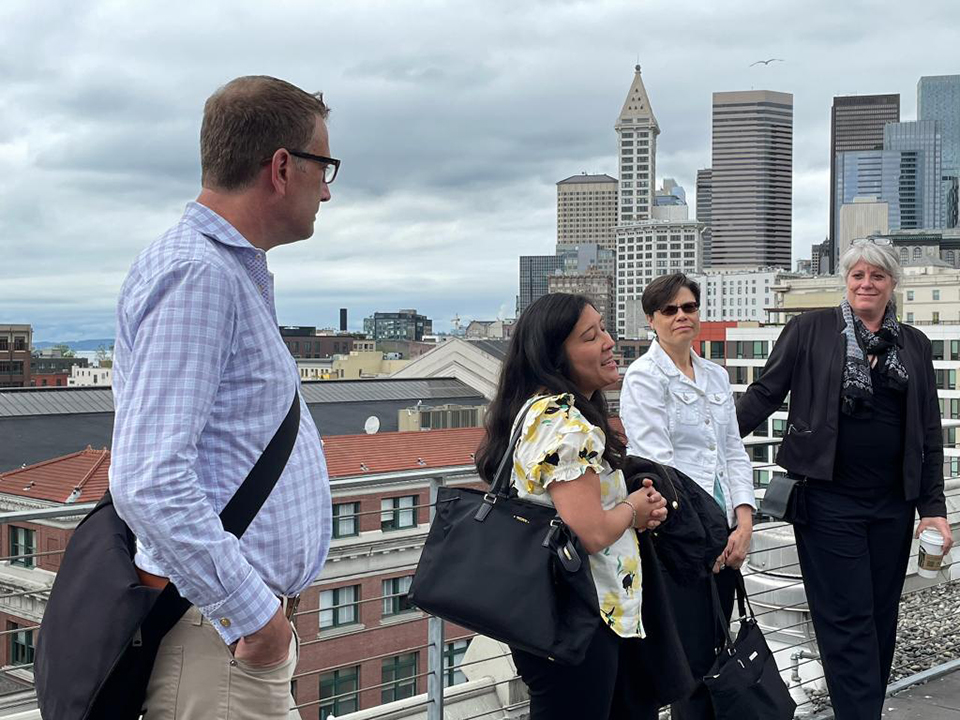
King County Councilman Joe McDermott, Uwajimaya CEO Denise Moriguchi, Krista Camenzind, and King County Council President Claudia Balducci on the rooftop of Publix Hotel. (Photo by Assunta Ng)
“There is a denser population of elders and a denser population of low-income and non-English speaking” who depend on nearby services such as ICHS and Bush Hotel.
Moriguchi said, “They (seniors) rely on walking through the district on a day to day basis, and public transportation,” and that tearing up the streets for this project would make things difficult for this population.
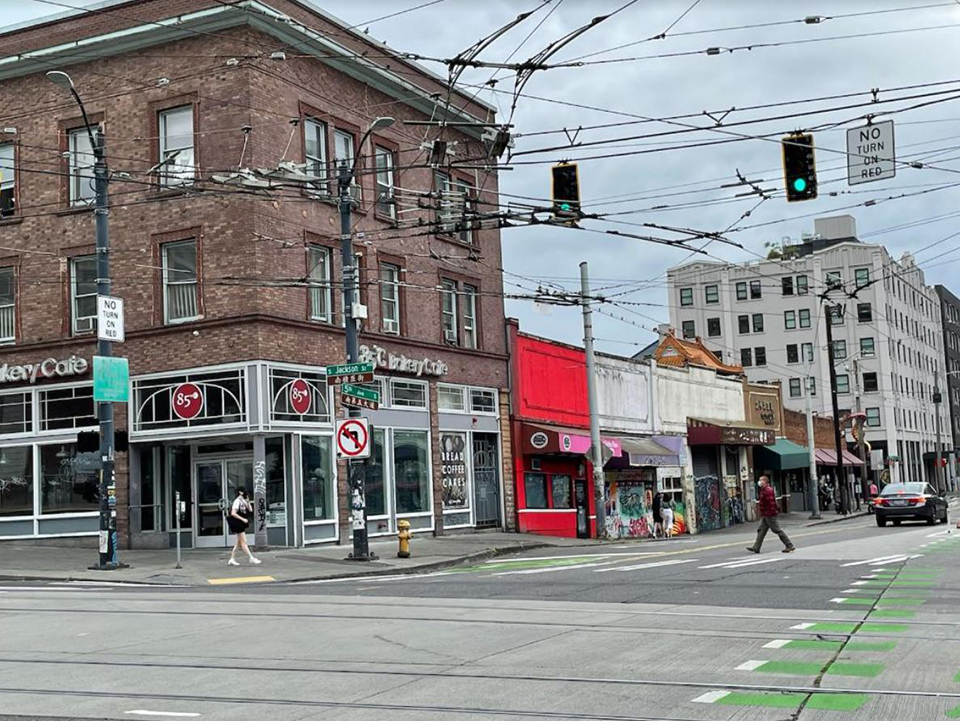
Buildings like to be demolished for 5th Ave. ST entrance from the S. Jackson St. angle (Photo by Assunta Ng)
“The Uwajimaya team supports the mission of ST and believes public transit and regional connectivity should be accessible to everyone,” Denise Moriguchi, Uwajimaya’s president, told the Northwest Asian Weekly in a statement. “We are eager to be a helpful partner in the West Seattle and Ballard Link Extensions (WSBLE) system expansion planning process but feel the impacts on the CID have not been adequately analyzed or mitigated.”
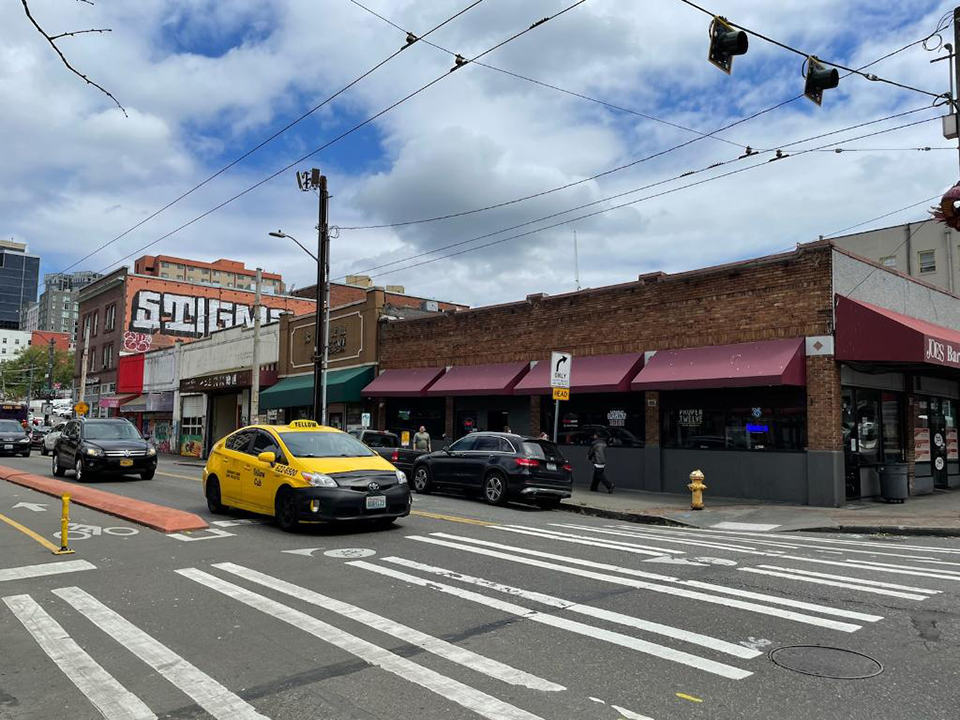
Buildings like to be demolished for 5th Ave. ST entrance from the S. King St. angle (Photo by Assunta Ng)
“The walking tour underscored my understanding of the impacts of any of the 5th Avenue alternatives,” said McDermott. “There would be significant business and residential displacement during construction, as well as long-term impacts and redevelopment that concern many with long histories in the neighborhood. From the Chinatown Gate to large and established businesses like Uwajimaya, to small and relatively new businesses like Hood Famous, the last few years have been a struggle and we should be mindful of the compounded impacts a 5th Avenue alignment would have.”

Union Station’s 4th Ave. entrance (see diagram below) (Photo by Assunta Ng)
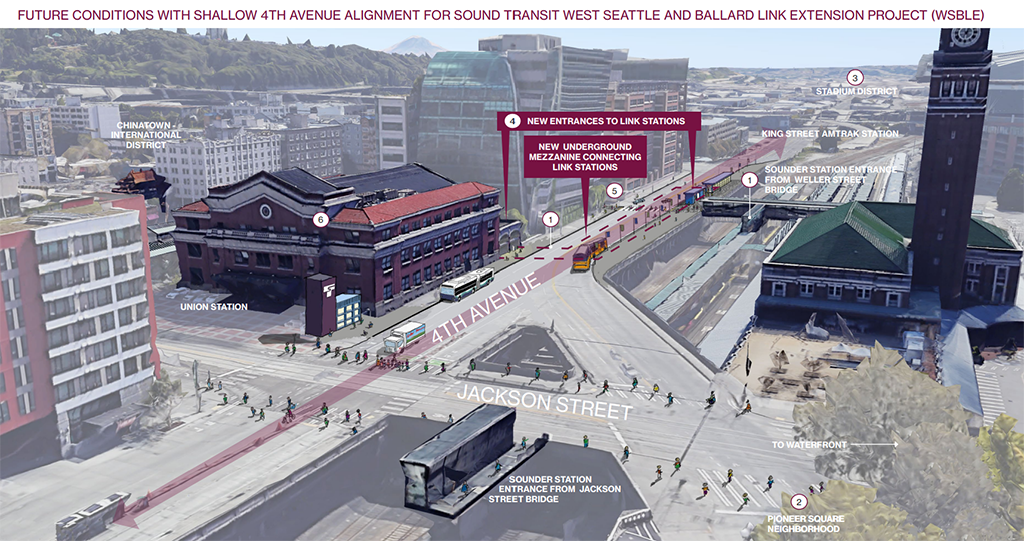
Union Station’s 4th Ave. entrance (Image provided by Historic South Downtown)
“Look at that area on 5th and Jackson, and 4th and Jackson,” Miye Moriguchi said on the tour.
“It’s pretty bad right now… it’s not a nice place to be walking. How do we turn that into a better space?”
She alluded to the Jackson Street hub project and the various studies to find out what people in the neighborhood value. Among the top concerns was connectivity between Pioneer Square and the CID.
Also part of the tour was Kathleen Johnson of Historic South Downtown.
Standing on 4th Avenue, Johnson explained, “There would be one entry on 5th where everybody can use it. There will be a lot more connections on the other side, people can go underground on the other side of 4th and on this side of 4th…it just provides a lot more opportunity (for connectivity).”
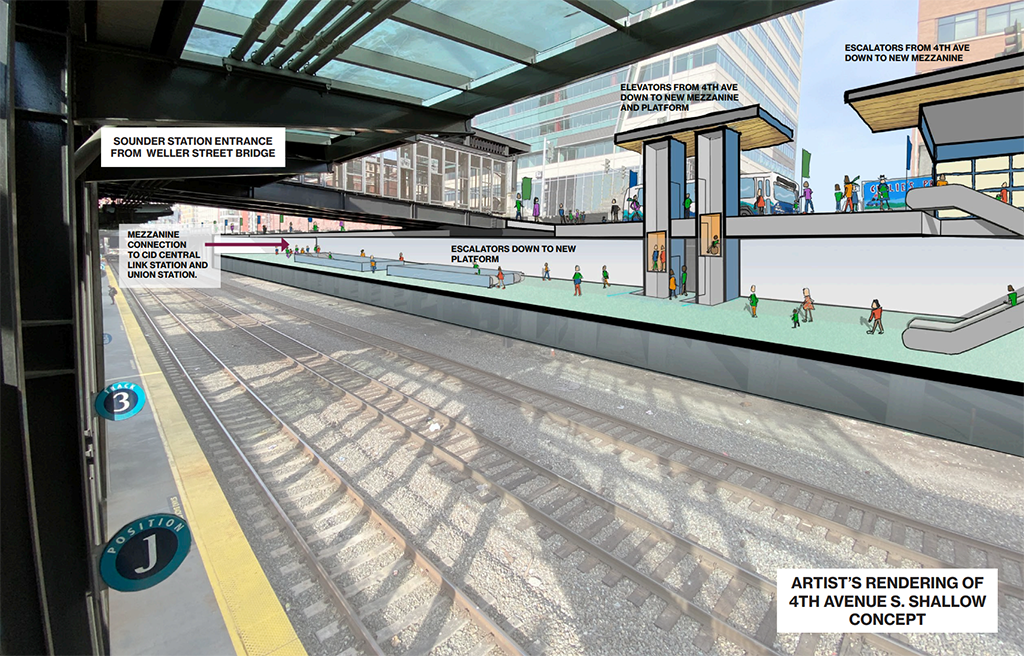
Vision board for what a 4th Ave S station might look like. (Provided by Historic South Downtown)
Johnson also said it would cut down on costs, disruption to transit, and lessen the detouring of traffic to the CID.
“We feel like there’s a real opportunity—we don’t want to just say 5th is bad. Fourth could be great, or fabulous! As far as activating Union Station, if we don’t do it in a way where people are walking through it organically… it does not work.”
“The CID is a unique and important place with deep cultural and historic significance that is valued regionally, including in the district I represent in East King County,” said Balducci. “I have heard strong opposition to the Fifth Avenue alignments and some support for the Fourth Avenue alignment. I have heard many requests for deeper study and information. I will take the input I’m receiving very seriously in working with my colleagues on the Sound Transit Board to direct the next steps in our study of options toward a final alignment decision.”
McDermott said, “I suggest that the Sound Transit Board may not be in a position this summer to decide on a preferred alignment in the CID when we do so for the rest of the West Seattle to Ballard alignment.”
He added, “ST should come to the community ready to engage in specific conversations about mitigation. What mitigation and even enhancement might come to the neighborhood with each alternative? Specific mitigation and enhancements even before a final alignment is selected is needed for the neighborhood to be able to have a meaningful conversation about benefits and impacts of alternatives.”
“The neighborhood is our home,” Denise Moriguchi said in a statement. “We are deeply invested in this community and we want to help find solutions that minimize harm to the CID, its residents and businesses.”
Ruth can be reached at editor@nwasianweekly.com.


